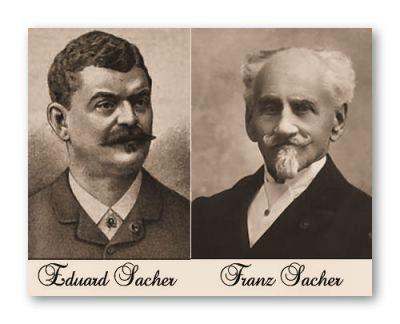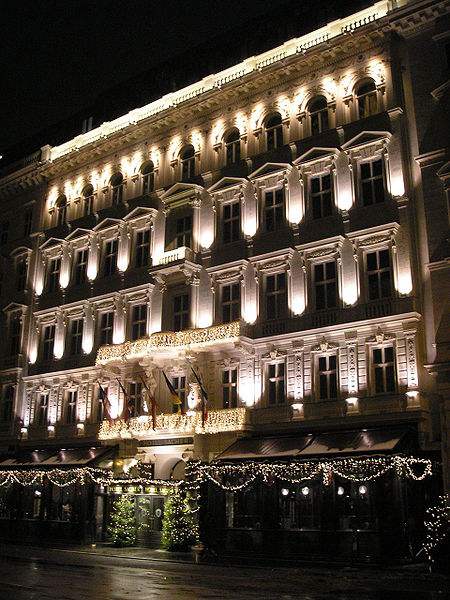Culinary prowess fits well with diplomatic achievement. Fine cheeses and Prince Talleyrand’s genius, for example, saved France from being carved up by its victors during the Congress of Vienna, in the wake of Napoleon’s defeat.
Austria’s great champion in this Congress of nations gathered in Vienna, was Prince Klemens Wenzel von Metternich. While he may not have scored any diplomatic triumphs using Austrian cheeses, this noble diplomat is associated with the world-renowned Sacher torte.
In 1832, 17 years after the Congress of Vienna, Prince Metternich was entertaining important guests. His chef, however, was sick, so the task of creating the dessert fell to a 16-year old lad, Franz Sacher. He created this famed chocolate torte, which was later perfected by his son Eduard. Today, going on 200 years later, Sacher torte is enjoyed everywhere, but nowhere is it more authentically prepared than at the Hotel Sacher, which Eduard Sacher founded in Vienna, in 1876.
Sacher Cake (Sachertorte)
“This is the original recipe, obtained through the courtesy of Mrs. Anna Sacher.”
3/4 cup butter
6 1/2 oz. semi-sweet chocolate
3/4 cup sugar
8 egg yolks
1 cup flour
10 egg whites, stiffly beaten
2 tabelspoons apricot jam
Icing
1 cup sugar
1/3 cup water
7 oz. semi-sweet chocolate
Whip the butter until creamy. Meanwhile melt the chocolate. Add the sugar and the melted chocolate to the whipped butter. Add the egg yolks, one at a time, into the mixture. Add flour. Fold in the egg whites. Pour the mixture into a buttered 8-9″ cake tin. Bake at 275° F for about 1 hour. Test with a toothpick before the hour is up. Remove to a wire rack and cool. Cut the top off and turn the bottom up. Heat the apricot jam slightly and spread over the top. Cover with the chocolate icing.
Icing
Cook the sugar and water to thin thread. Melt the chocolate in a double boiler. Slowly add the sugar and continue stirring until the mixture coats the spoon. Cover the cake with the chocolate icing.
Cf. Olga and A. Hess, Viennese Cooking, adapted for American use (New York: Crown Publishing, 1952), 229.














